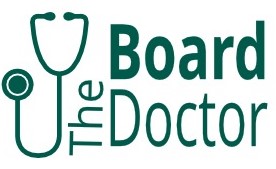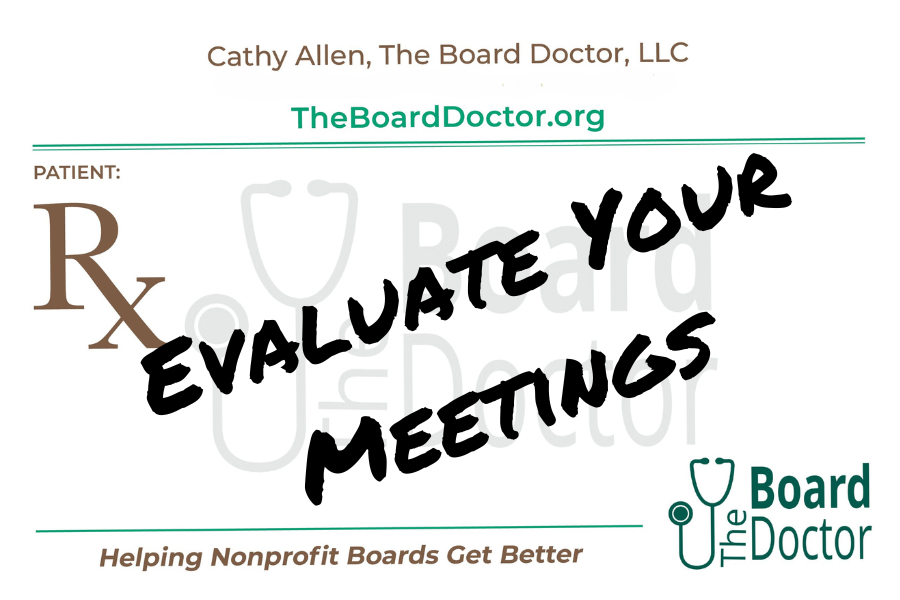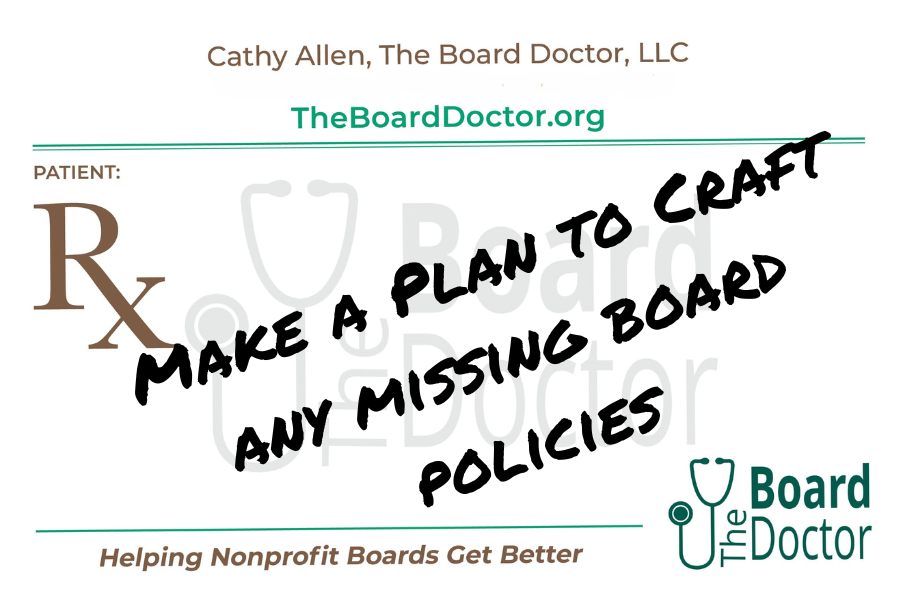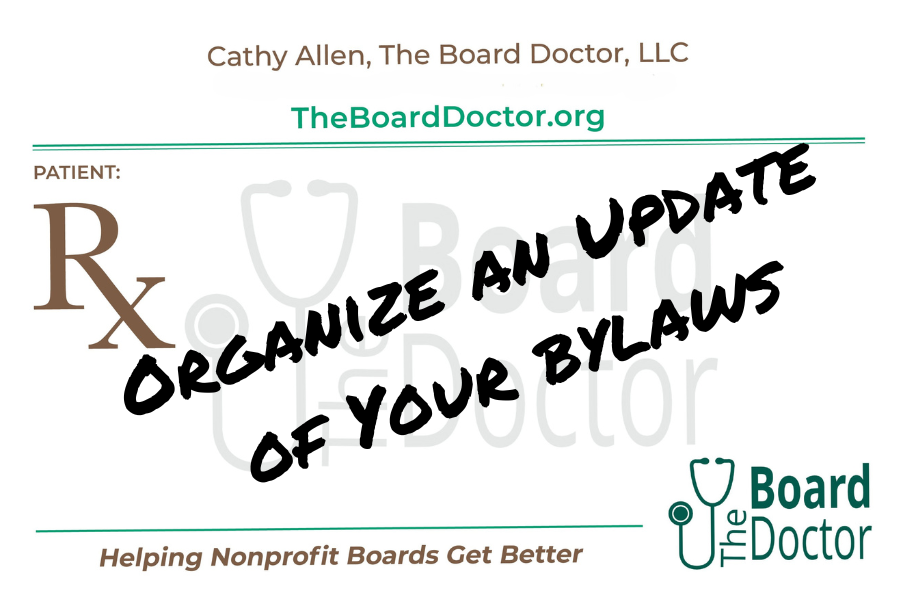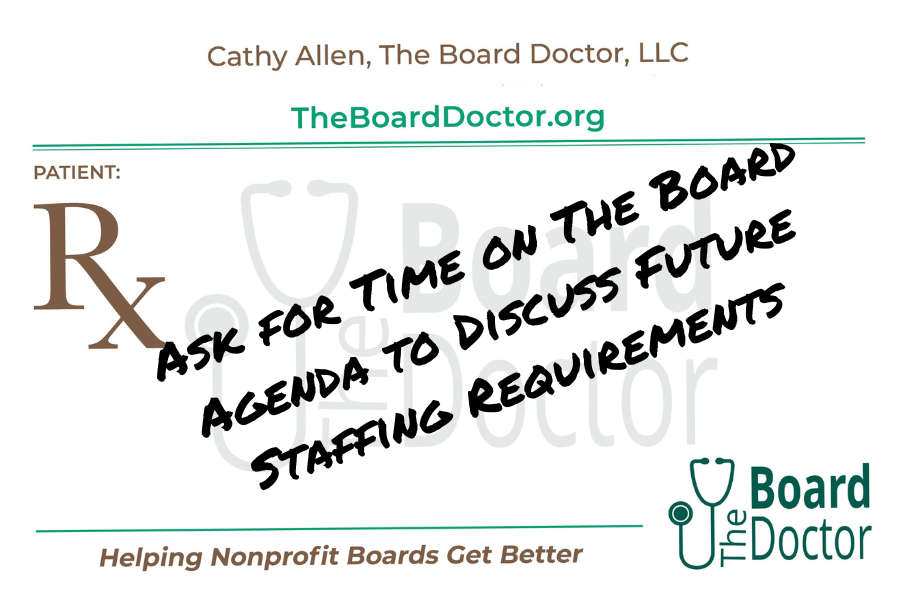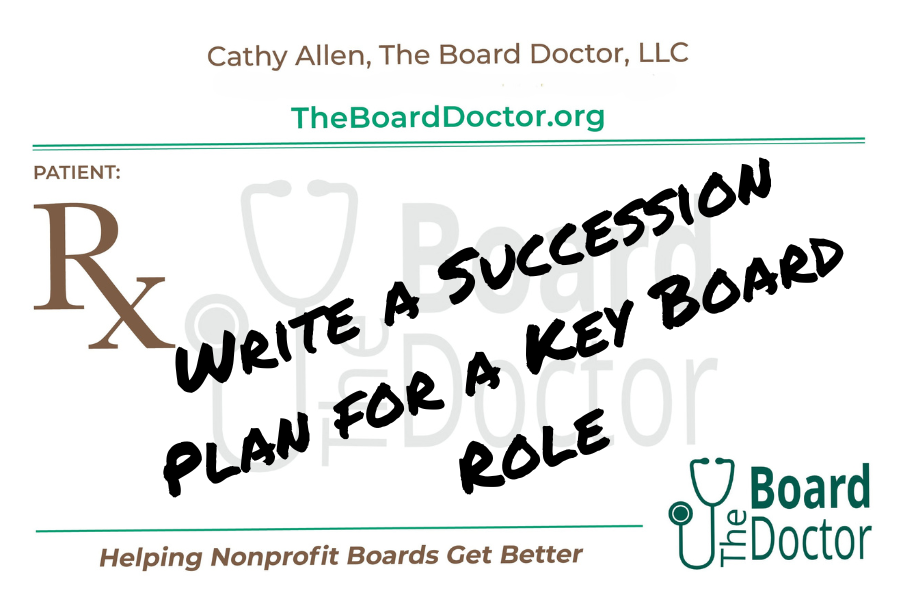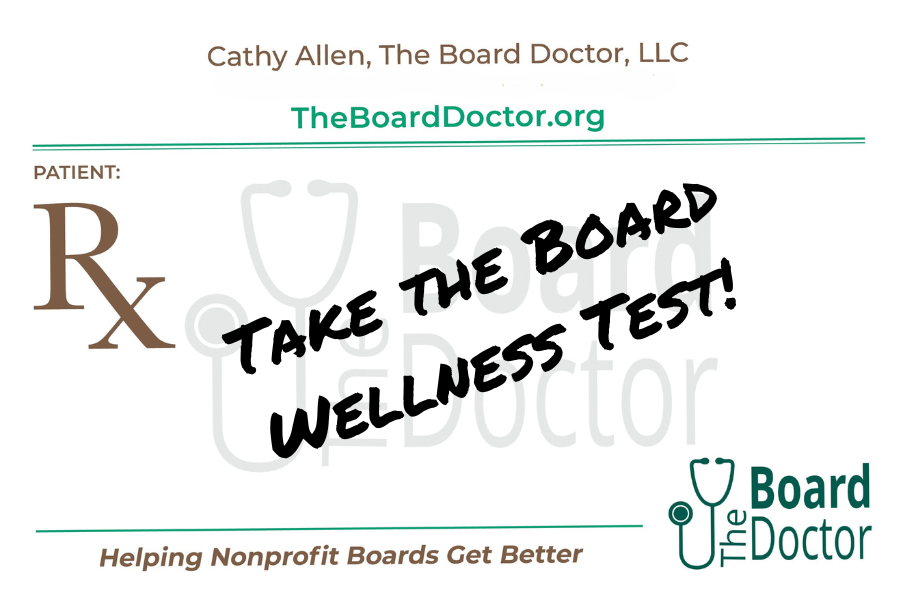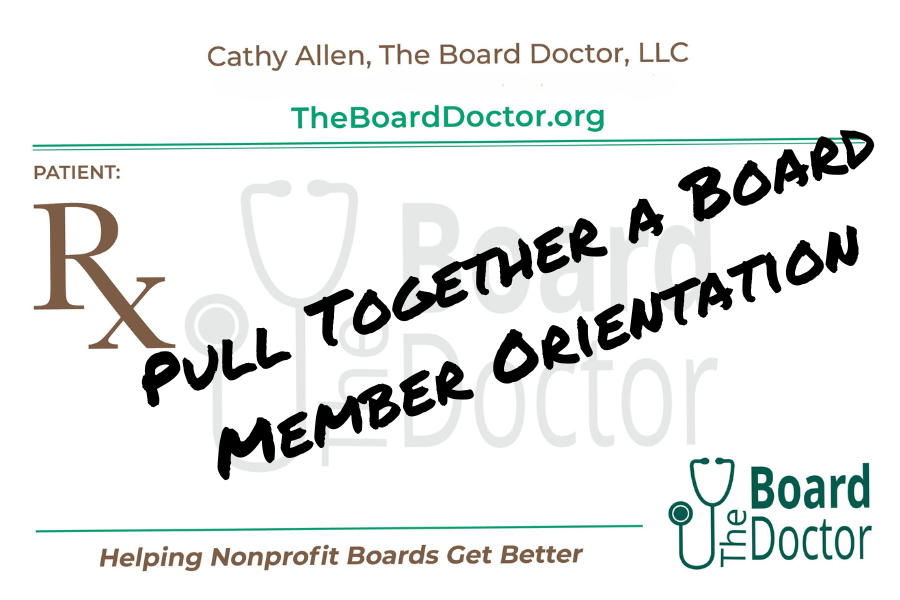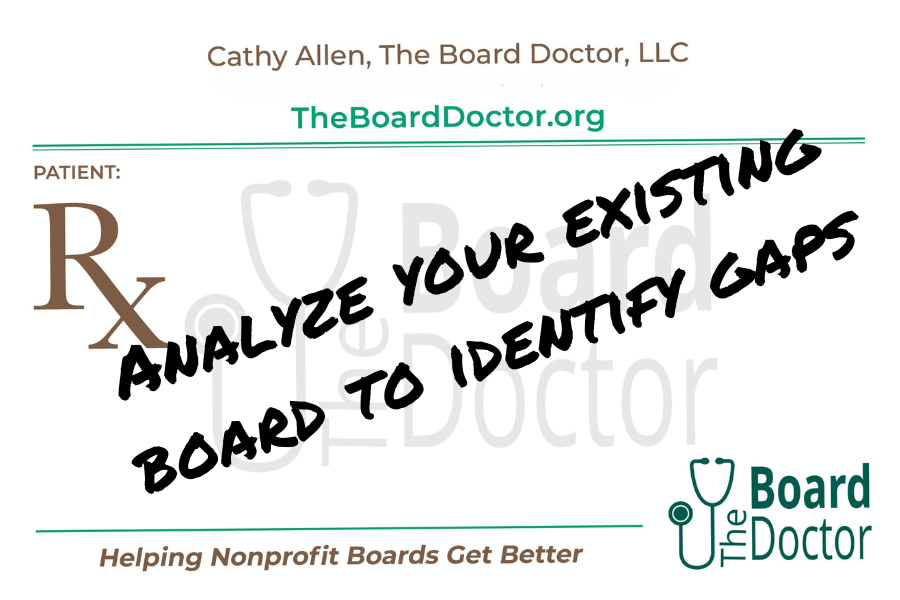
Nonprofit911 is a newsletter, published each week on The Board Doctor’s company page on LinkedIn, which includes original and curated material written and chosen to help leaders of small nonprofits meet the moment, build ever healthier organizations, and move forward with confidence and vigor. Our focus is on concrete action steps. This page will serve as the repository and library of downloadable templates. Wherever your organization is on the road between life-support and 100% vitality, if you are a leader looking for know-how and support, Nonprofit911 is for you.
Note to those who do not have a LinkedIn account: you can see all issues of the newsletter below. Just click on what you want to read, then close out the popup box asking you to log in to LinkedIn.
The Board Doctor’s Prescriptions
The best way to make progress toward a goal is to measure it! By asking participants to evaluate the board meetings regularly, you can take action to fix whatever is not working well.
The first step is to decide what you need (and don’t need.) The second step is to rank them in order of importance. Then set a schedule. Add one new policy a quarter and at the end of 3 years you’ll have a solid policy infrastructure.
Requirements for bylaws vary from state to state so make sure to have your bylaws changes reviewed by an attorney familiar with nonprofit corporations. The downloadable sample is pretty generic and should be sufficient in most places.
Having a critical conversation about an important decision like whether it is time to hire can be difficult in a regular board meeting. Ask for time on the agenda and circulate my article to the board as a jumpstart to a great conversation.
Succession planning does not need to be a difficult process for most small nonprofits. Use the two-page template as a guide to discuss your key roles, makes decisions about transitioning them, and write down your decision.
Want a way to get a quick screening? To quickly check if your board is basically on track… or basically not? Our free ten-question Wellness Test is just the ticket! Don’t forget to include your name and email address so we can send you the results.
Even small and uncomplicated organizations take a bit of time to learn. By providing a thoughtful and organized orientation at the outset, you can help deepen the long-term engagement of new board members.
This week’s prescription action step is a two-parter, 1) determine your ideal board makeup, 2) analyze existing board to identify gaps.
Effective committee work begins with clear direction from the board about the purpose and key annual responsibilities of each. Start with this set of sample committee “charters” and customize it for your organization.
ADDITIONAL DOWNLOADS:
Most nonprofit organizations have budgets that are too small to commission an external audit, but that does not mean those boards can’t have checks and balances. An internal audit can provide an extra layer of protection.
The nonprofit community is rich with resources for nonprofit leaders who want to learn more about how to do their jobs well. Check out my 6-page list of “capacity building” organizations… and don’t forget to explore our own Nonprofit Vitality.
Some organizations get actively involved in public policy issues and some stay away. Your group does not have a policy – until you have a policy! Use our template to get the conversation started.
No two board members are alike, so why expect all of them to take on the same tasks in fundraising? Do yourself (and them!) a favor and make Individual Board Member Fundraising Agreements.
If it’s been a while since the last time your board had a high-quality conversation about what it means to serve as a board member, there’s no time like the present! Ask for a place on the meeting agenda to discuss your current board member position description or use this template as a starting point.
